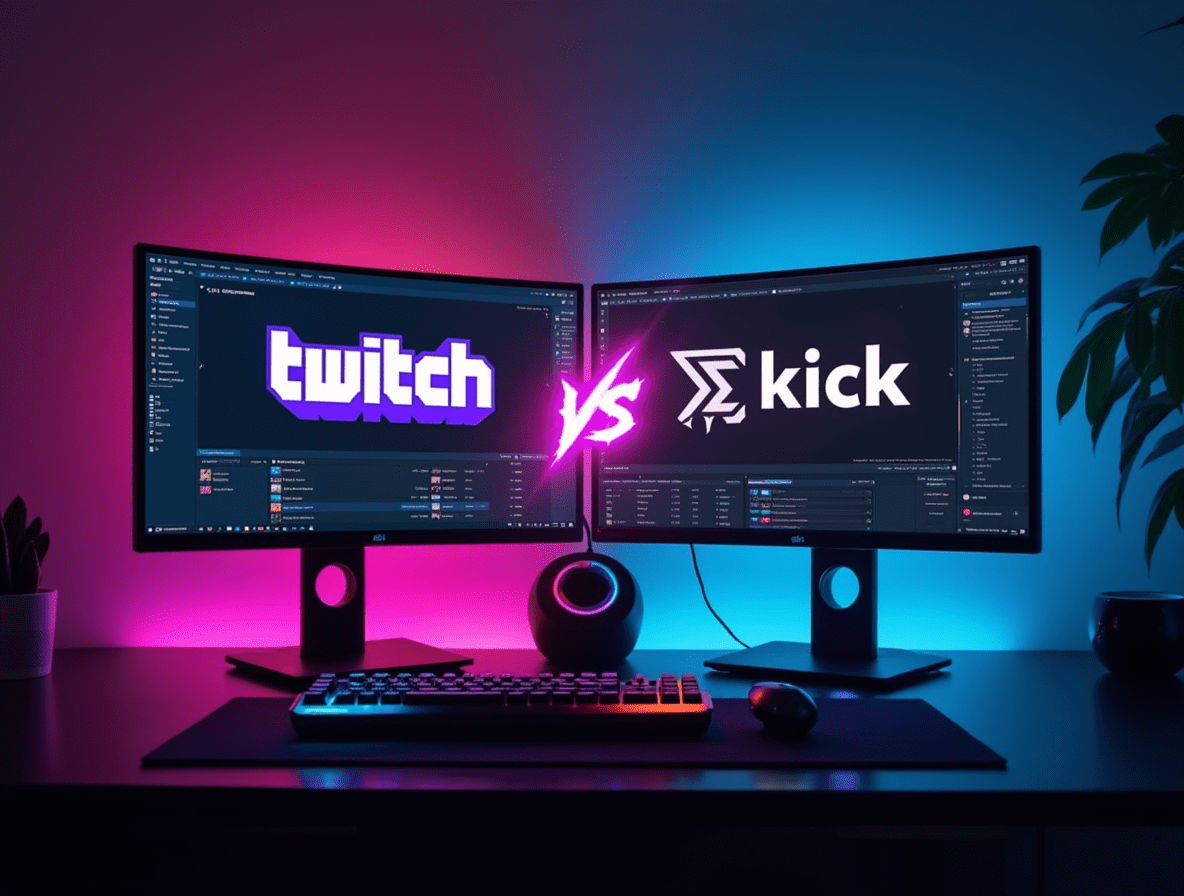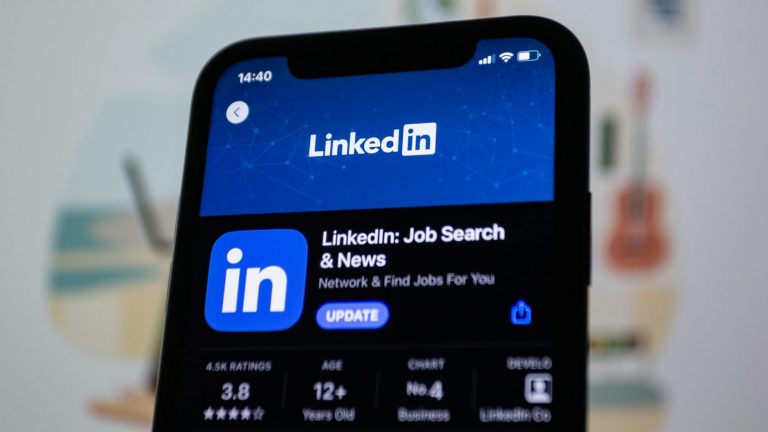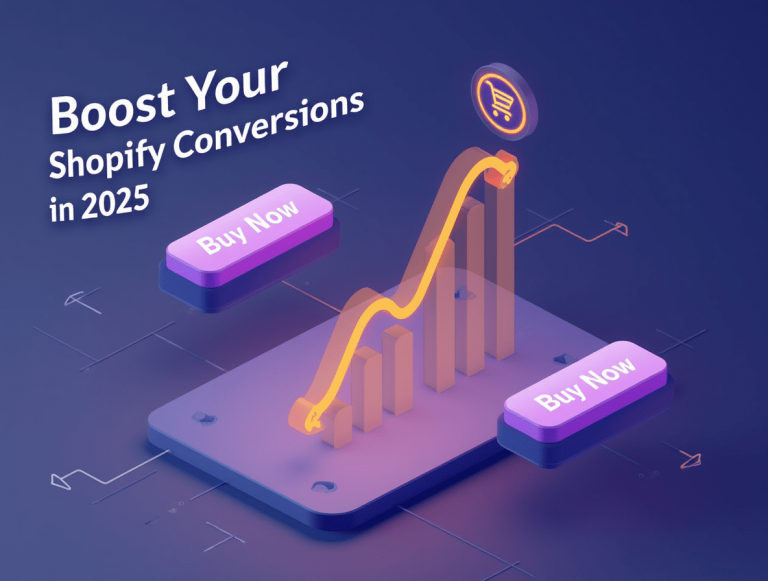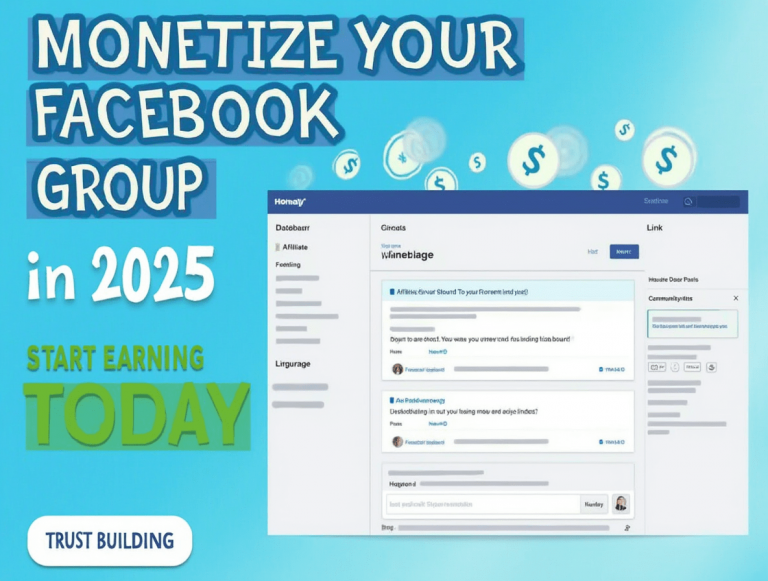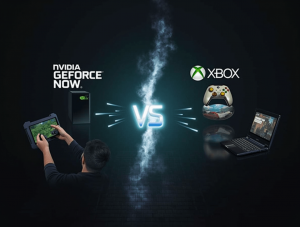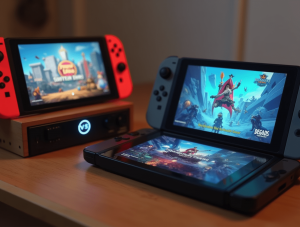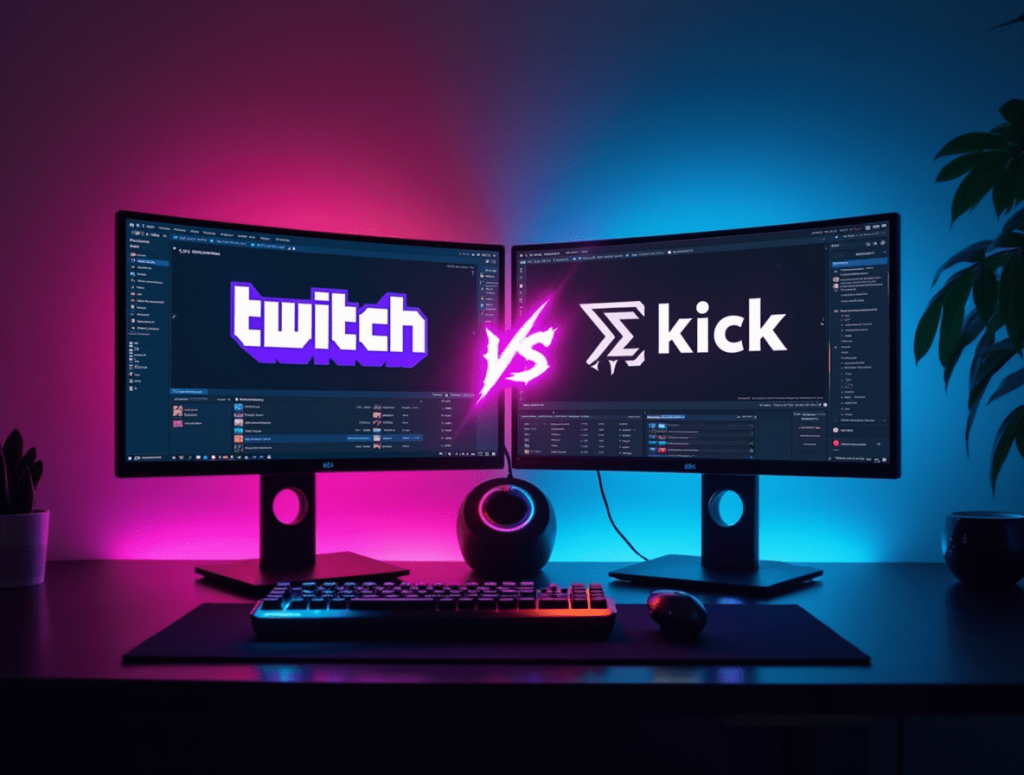
Twitch vs Kick: Which Streaming Platform is Better for Gamers?
The livestreaming landscape has evolved dramatically since Twitch pioneered gaming broadcasts over a decade ago. While Twitch remains the dominant platform with over 140 million monthly active users, newer challenger Kick has rapidly gained attention by offering streamers more favorable revenue splits and fewer content restrictions.
For gamers looking to build an audience or find new content to watch, choosing between these platforms involves weighing factors beyond simple viewer counts. Recent data shows that while Twitch maintains approximately 73% of the livestreaming market share, Kick has grown to capture nearly 8% since its December 2022 launch—impressive growth that has forced Twitch to reconsider some of its policies.
This guide breaks down how Twitch and Kick compare across the features that matter most to streamers and viewers: monetization options, platform tools, audience reach, content policies, and technical capabilities. Whether you’re a streaming veteran or just getting started, understanding these differences will help you decide which platform better serves your specific gaming content needs.
Platform Background and Market Position
Twitch: The Established Leader
Launched in 2011 and acquired by Amazon in 2014 for nearly $1 billion, Twitch has defined what game streaming looks like today:
- Scale: Over 140 million monthly active users
- Content Volume: More than 2.5 million concurrent viewers on average
- Streamer Base: Approximately 9 million active streamers monthly
- Market Position: Dominant platform with deep Amazon integration
- Brand Recognition: Synonymous with game streaming for most viewers
Twitch’s established ecosystem includes partnerships with major gaming publishers, esports leagues, and content creators, creating a mature but increasingly competitive marketplace for streamer attention.
Kick: The Well-Funded Challenger
Launched in December 2022 with financial backing from cryptocurrency gambling site Stake.com, Kick positioned itself as a streamer-friendly alternative:
- Scale: Estimated 15-20 million monthly active users
- Content Volume: Approximately 200,000 concurrent viewers on average
- Streamer Base: Over 1 million registered creators
- Market Position: Fastest-growing challenger platform
- Brand Approach: Marketed as “by streamers, for streamers”
Kick gained initial attention through high-profile streamer acquisitions, including controversial figure Trainwreckstv and former Twitch star xQc, who reportedly signed a $100 million non-exclusive deal.
Monetization Models and Revenue Splits
Twitch’s Monetization Structure
Twitch offers several monetization options with a tiered approach to revenue sharing:
Subscription Revenue Split:
- Standard Partners and Affiliates: 50/50 split (streamer gets half)
- Premium Partners: 70/30 split for first $100K earned, then reverts to 50/50
- Subscription tiers: $4.99, $9.99, and $24.99 monthly options
Additional Revenue Streams:
- Bits (platform currency): Streamers receive $0.01 per Bit
- Ads: Revenue share varies (approximately 55% to streamers)
- Prime Gaming subscriptions: Counted as standard subscriptions
- Direct donations: Processed through third-party services
Path to Monetization:
- Reach Affiliate status: 50 followers, 8 hours streamed over 7 days, average of 3 viewers
- Reach Partner status: Consistent streaming schedule, average of 75+ viewers, quality content
Kick’s Streamer-Focused Approach
Kick has built its platform around more favorable economics for creators:
Subscription Revenue Split:
- All streamers: 95/5 split (streamer keeps 95%)
- Subscription price: $4.99 monthly standard option
- No tiered subscription levels currently
Additional Revenue Streams:
- Kicks (platform currency): Similar to Bits but with better creator revenue
- No mandatory ads on streams
- Direct donations with lower platform fees
- Potential for platform-negotiated deals
Path to Monetization:
- Simplified Partner Program: Generally accessible after consistent streaming
- No formal Affiliate program; monetization available earlier in creator journey
Real Economic Impact
The difference in revenue splits creates significant financial outcomes:
Example Scenario:
- 1,000 subscribers at $4.99 each:
- Twitch revenue (50/50): $2,495 monthly
- Kick revenue (95/5): $4,740 monthly
- This represents a $2,245 monthly difference, or approximately 90% more income on Kick
For many mid-sized streamers, this economic advantage has been the primary motivation for trying or switching to Kick, though Twitch’s larger audience potential creates complex trade-offs.
Audience Reach and Discoverability
Twitch’s Massive Audience
Twitch’s primary advantage remains its vast, established audience:
- Viewership Scale: 31+ billion hours watched annually
- Discovery Systems: Categorized browsing, tags, and algorithmic recommendations
- Integration Advantages: Amazon Prime benefits, game integrations, extensions
- Global Reach: Strong presence in North America, Europe, South America, and growing Asian markets
- Cultural Penetration: Referenced in mainstream media, established cultural touchpoint
For new streamers, Twitch’s challenge is standing out in an increasingly crowded marketplace. The platform’s size creates both opportunity and difficulty in building an initial audience.
Kick’s Growing Community
Kick offers a less saturated but smaller overall environment:
- Viewership Growth: Rapid expansion from zero to millions in under two years
- Discovery Approach: Currently less sophisticated but less competitive
- Streamer Migration Effect: Viewers following favorite creators from other platforms
- Regional Strengths: Strong early adoption in North America and parts of Europe
- Platform Investment: Heavy spending on marketing and streamer acquisition
Many streamers report easier initial audience building on Kick due to less competition, though the platform’s total reach ceiling remains significantly lower than Twitch’s.
Comparative Visibility
The platforms offer different pathways to visibility:
Twitch Advantages:
- Established tags and category system
- More sophisticated recommendation algorithm
- Larger potential audience ceiling
- Better integration with external sites and services
Kick Advantages:
- Less saturated streams per category
- More prominent featuring of mid-sized creators
- Potentially easier path to initial audience
- More flexibility in content types
The data suggests new streamers may find their first 50-100 concurrent viewers more easily on Kick, while Twitch offers better scaling potential for audiences beyond that threshold.
Platform Features and Streaming Tools
Twitch’s Mature Feature Set
Two decades of development have given Twitch an extensive array of features:
Community Tools:
- Detailed channel analytics
- Stream Manager dashboard
- Comprehensive moderation capabilities
- Custom chat commands and AutoMod
- Raids and host functionality
Interactive Elements:
- Channel points system
- Extensions for interactive overlays
- Predictions and polls
- Hype Trains during subscription surges
- Soundtrack (rights-cleared music)
Technical Infrastructure:
- Stable, reliable streaming infrastructure
- Multiple quality options for viewers
- Comprehensive API for developers
- Mobile app with full functionality
- VOD and clip system with editing tools
Kick’s Evolving Toolkit
As a newer platform, Kick offers a more streamlined but growing feature set:
Community Tools:
- Basic channel analytics
- Simplified stream dashboard
- Standard moderation tools
- Chat filters and timeouts
- Basic raid functionality
Interactive Elements:
- Simple viewer engagement tools
- Developing extension marketplace
- Basic polling capabilities
- Custom alerts and notifications
- Fewer restrictions on background music
Technical Infrastructure:
- Modern infrastructure with fewer legacy systems
- Limited quality options on smaller channels
- Developing API access
- Mobile app with core functionality
- Basic VOD system
Feature Gap Analysis
Twitch maintains significant advantages in feature depth, though Kick is rapidly developing:
- Chat and Community Experience: Twitch offers more robust moderation tools and community management options
- Discoverability Tools: Twitch’s tagging and categorization system is more sophisticated
- Developer Integration: Twitch has a more mature API and extension ecosystem
- Mobile Experience: Twitch’s mobile apps are more refined with better performance
- Analytics: Twitch provides deeper insights into audience behavior and stream performance
For streamers heavily reliant on specific tools or extensions, these differences may impact workflow and audience engagement capabilities.
Content Policies and Platform Culture
Twitch’s Evolving Guidelines
Twitch has developed increasingly comprehensive community guidelines:
- Content Restrictions: More conservative approach to mature content
- Copyright Enforcement: Stricter DMCA implementation and music limitations
- Banned Categories: Gambling with real money, certain mature themes
- Suspension System: Three-strike policy with sometimes inconsistent enforcement
- Appeals Process: Formal but often criticized for slow responses
The platform has faced criticism for perceived inconsistency in policy enforcement, creating uncertainty for creators navigating content boundaries.
Kick’s Relaxed Approach
Kick has positioned itself with more permissive content policies:
- Content Philosophy: Greater creator freedom with fewer restrictions
- Copyright Stance: Currently less aggressive enforcement
- Allowed Categories: More permissive regarding gambling content and mature themes
- Moderation Approach: Less automated, more human-reviewed
- Appeals Process: More direct creator support
This freedom comes with both benefits and concerns regarding platform responsibility and advertiser comfort levels.
Comparing Content Freedom
The practical impact of these different approaches affects content creators in several ways:
Twitch Considerations:
- More advertiser-friendly environment
- Greater risk of automated strikes or suspensions
- Clearer boundaries for brand-safe content
- More family-friendly overall image
Kick Considerations:
- More flexibility for edgy or mature content
- Fewer restrictions on music during streams
- Gambling content permitted (controversial)
- Less automated enforcement
For content creators, the right balance depends largely on content type and risk tolerance. Family-friendly content creators may find little practical difference, while creators with edgier content may prefer Kick’s more permissive environment.
Technical Performance and Streaming Quality
Twitch’s Established Infrastructure
Twitch operates on a mature, tested infrastructure:
- Server Network: Global server distribution
- Stream Quality: Support for up to 1080p/60fps (higher for select partners)
- Latency Options: Standard (2-5 seconds) and low-latency mode
- Reliability: Generally stable with occasional regional issues
- Ingest Options: Multiple ingest servers and protocols
Despite its size, Twitch maintains consistent technical performance with predictable quality.
Kick’s Modern Architecture
Built with newer technology, Kick offers competitive technical capabilities:
- Server Network: Growing global presence but less comprehensive
- Stream Quality: Support for up to 4K streaming (bandwidth permitting)
- Latency Performance: Generally low-latency by default
- Reliability: Improving but still experiencing growing pains
- Ingest Performance: Modern protocols with good efficiency
Kick’s advantages include higher maximum quality options and potentially lower latency, though with a less proven infrastructure during peak demands.
Technical Comparison for Streamers
From a streamer’s technical perspective:
- Maximum Quality: Kick offers higher resolution options for streamers with the capacity
- Transcoding: Twitch provides more consistent quality options for viewers with slower connections
- Stability: Twitch has more predictable performance during high-traffic events
- Mobile Streaming: Twitch offers better mobile broadcasting tools
- Bandwidth Efficiency: Similar encoder support with slight advantages to Kick’s newer infrastructure
For viewers on slower connections, Twitch’s more widely available transcoding (multiple quality options) provides better accessibility.
Making Your Decision: Platform Recommendations
Choose Twitch If:
- You prioritize maximum potential audience size
- You value comprehensive community management tools
- Your content fits well within Twitch’s community guidelines
- You want the most developed extension and integration ecosystem
- You’re building a brand that may benefit from Twitch’s mainstream recognition
- You want the most stable technical infrastructure for large events
Choose Kick If:
- You prioritize higher revenue percentages from subscriptions
- You create content that pushes boundaries of what’s allowed on Twitch
- You want less competition for viewer attention in your category
- You’re frustrated with Twitch’s moderation or strike system
- You prefer a platform with less automated content policing
- You want to stream at higher resolutions (above 1080p)
Consider Streaming on Both Platforms If:
- You want to maximize different revenue streams
- You have the technical setup to manage multiple platforms
- You’re building an audience that isn’t platform-dependent
- You want to test which platform works better for your specific content
- You’re an established streamer who can bring viewers to either platform
Multi-streaming (streaming to both platforms simultaneously) is technically possible but violates Twitch’s partner/affiliate agreements. Non-exclusive content creators often alternate platforms or use one as their primary home with occasional content on the other.
Conclusion: A Changing Streaming Landscape
The competition between Twitch and Kick represents healthy evolution in the livestreaming ecosystem. Twitch’s early dominance allowed it to set industry standards that heavily favored the platform over creators, while Kick’s entrance has forced reassessment of these norms—evidenced by Twitch’s recent moves toward better revenue sharing for top creators.
For streamers, this competition creates leverage and options previously unavailable. For viewers, it potentially means more diverse content and creator-friendly platforms. The “better” platform ultimately depends on individual creator needs, content style, and career goals.
As both platforms continue evolving, the differences between them will likely shift. Kick will need to develop more robust features while maintaining its creator-first approach, while Twitch must balance maintaining its audience advantage against improving creator economics to prevent further talent migration.
Rather than declaring a definitive winner, smart content creators should understand the strengths and limitations of each platform, potentially leveraging both as part of a diversified content strategy.
FAQ Section
Can I stream on both Twitch and Kick simultaneously?
Not if you’re a Twitch Affiliate or Partner, as their agreements require streaming exclusivity (typically for 24 hours). Non-affiliated streamers can multi-stream, though managing chat across platforms presents practical challenges. Many creators choose a primary platform while maintaining a presence on the other.
How do viewers purchase subscriptions on each platform?
On Twitch, viewers can subscribe using direct payment methods or through Amazon Prime (one free subscription per month). On Kick, subscriptions are purchased directly through the platform with standard payment methods. Both platforms offer gifted subscriptions.
Which platform has better discoverability for new streamers?
Most new streamers report easier initial growth on Kick due to less saturation, though with a lower maximum audience ceiling. Twitch has more sophisticated discovery tools but much higher competition for viewer attention. Success on either platform still requires consistent, quality content and community engagement.
How do the platforms handle copyright issues with music?
Twitch employs automated detection systems that can mute VODs or issue DMCA strikes for unauthorized music. Kick currently has a more relaxed approach to background music, though this may change as the platform grows. Both platforms offer some rights-cleared music options for streamers.
Which platform offers better protection from harassment?
Twitch has more developed moderation tools, automated filtering, and a larger moderation team. Kick is developing these systems but currently offers less comprehensive protections. For streamers concerned about chat management, Twitch’s more mature toolset provides better resources for community management.
Can I transfer my Twitch community to Kick?
While you can encourage your audience to follow you to Kick, there are no direct migration tools. Building presence on a new platform typically requires promoting your new channel link, adjusting to different community tools, and potentially accepting some audience loss during transition. Many successful creators maintain presence on both platforms during transitions.





